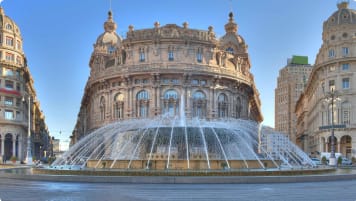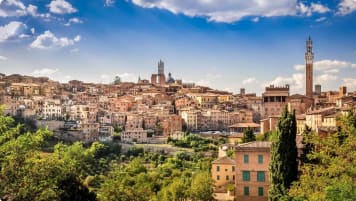Mediterranean Islands: Malta, Sicily, Sardinia and Corsica
Malta, Sicily, Sardinia and Corsica: An Educational Journey through Western Mediterranean This article takes you on a journey through the beautiful islands of the western Mediterranean – Malta, Sicily, Sardinia and Corsica – by tracing…
4 Oct 19 · 19 mins read

Malta, Sicily, Sardinia and Corsica: An Educational Journey through Western Mediterranean
This article takes you on a journey through the beautiful islands of the western Mediterranean – Malta, Sicily, Sardinia and Corsica – by tracing their centuries-long history.
Many civilisations and empires arose, flourished, and declined around the shores of the Mediterranean. Its islands bear the marks of its conquerors, from the Phoenicians, Greeks and Romans, to the Turks, Spanish and British.
The western Mediterranean islands of Malta, Sicily, Sardinia and Corsica vary from sun-drenched rocky masses to fertile lands with rolling pastures, forested mountains, volcanoes, and spectacular coastlines. Ancient peoples left temples, standing stones, and forts here, and bays and inlets sheltered fishing and trading fleets for millennia.
Journeying from one island to the next takes the traveller along sea-routes traversed by the Phoenicians, Greeks, Romans and Arabs. Now considered wonderful vacation spots by tourists who cruise through the Mediterranean Sea, a deeper look at these islands reveals their complex and intricate histories.

The Romans ruled Malta, Sicily, Sardinia & Corsica
The Roman Empire ruled all four islands for centuries. After the ‘barbarian invasions’ destroyed the Empire in the western Mediterranean, the islands were reconquered by the Byzantines, then attacked by the Arabs in the ninth century.
Subsequently, the Italian maritime states of Pisa and Genoa retook Sardinia and Corsica for Christendom. Malta had the distinction of being ruled by an order of crusading knights, the Knights of St John Hospitaller, until it was acquired by Britain during the Napoleonic Wars.
Sardinia, after being ruled by Spain, was transferred to the Dukes of Piedmont, unexpectedly becoming the kingdom which formed the core of the new unified Italy. Corsica, birthplace of Napoleon, produced its own nationalist movement and briefly gained independence from Genoa, which then ceded it to the French king Louis XV in 1769.
The history and culture of these four islands have a number of common threads, but each possesses many unique aspects.

- Malta withstood two tremendous sieges during its history – firstly in 1565, when the Knights of St. John Hospitaller held out against the Ottomans, who, having conquered Constantinople (now Istanbul) and all the eastern Mediterranean, were threatening to overwhelm Western Europe. The second great siege occurred during World War II, when the island held out against the repeated onslaught of the Luftwaffe for three years. Malta and her people received the St George Cross in recognition of their bravery.
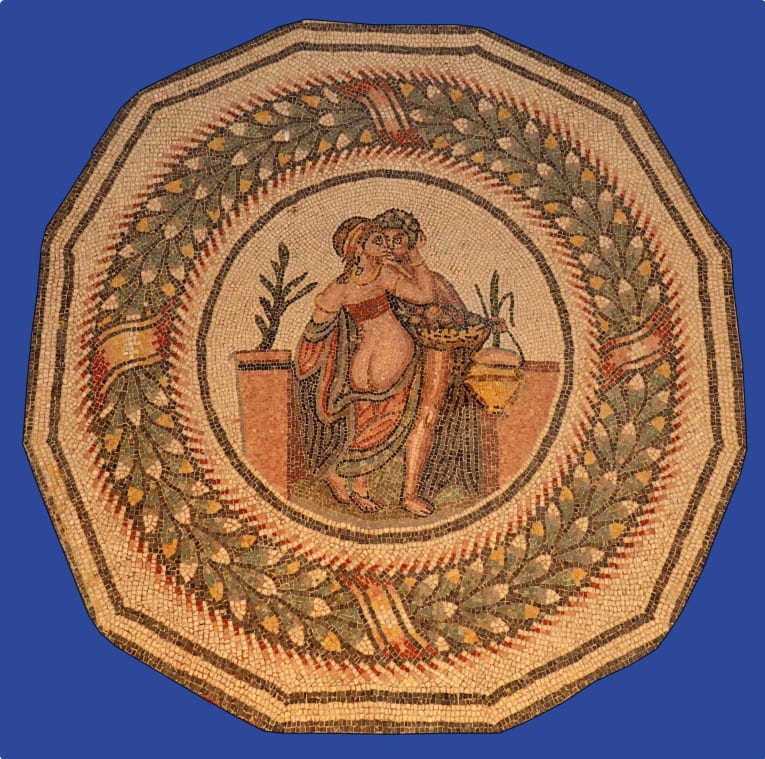
- Sicily’s natural resources and central position in the Mediterranean made it a great prize for successive ambitious states and rulers. It was a great centre of Greek civilisation in antiquity then an important Roman and Byzantine province, before being conquered and settled by Arabs in the ninth century, as was Malta. You can read more about Sicily’s early history here. Sicily was won back for Catholic Christendom two centuries later by a band of Norman knights and became for a time the heart of a great kingdom which included all of mainland southern Italy.
- Sardinia was renowned in the ancient world for its obsidian, which was traded throughout the region to make sharp tools and arrowheads. The native Sards were successively overrun by Phoenicians, Carthaginians, Romans, Vandals, Byzantines, Arabs, Spaniards and finally Italians. All these diverse peoples had a hand in the making of today’s Sardinia.
- Corsica has a similarly turbulent past, and was a bone of contention between Pisa and Genoa, then Genoa and Aragon. Rebellion against Genoese rule finally led to the establishment of a republic under Pasquale Paoli, but when Genoa sold her remaining Corsican towns to France, French troops arrived in overwhelming numbers.
These four beautiful islands can all be explored on an Odyssey Traveller escorted small group tour for seniors. Read on to learn more about the popular destinations, main highlights, heritage sites and hidden gems we visit in Malta, Sicily, Sardinia and Corsica.
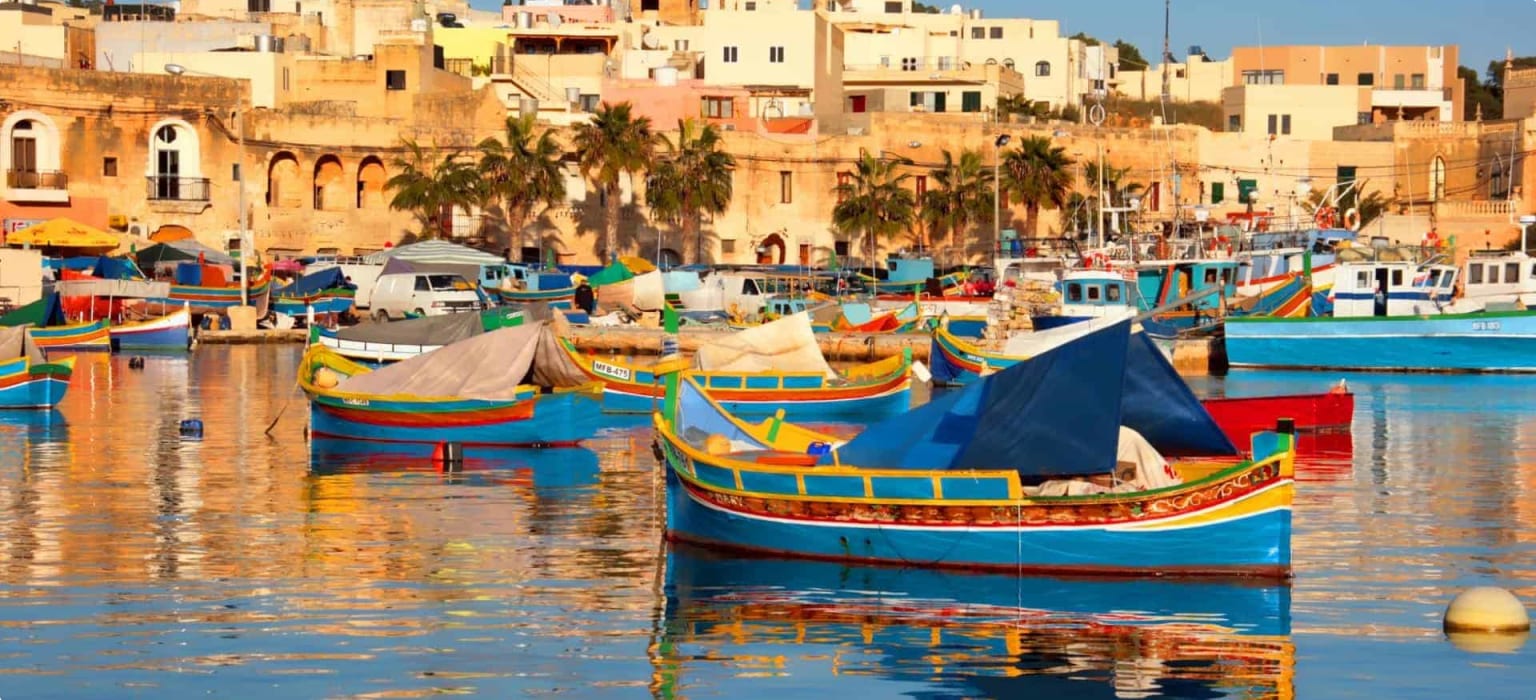
Malta

The tiny Republic of Malta is right in the centre of the Mediterranean, midway between Sicily and Tunisia. It consists of the island of Malta itself, the smaller adjacent island of Gozo, the even smaller Comino, and other islets. Much of Malta’s rocky landscape is cut into terraces for farming, but the Maltese have always depended on fishing and seafaring. Malta is exploiting its sunshine and beaches, and above all its history, attracting tourists and film-makers.
Valletta, the capital
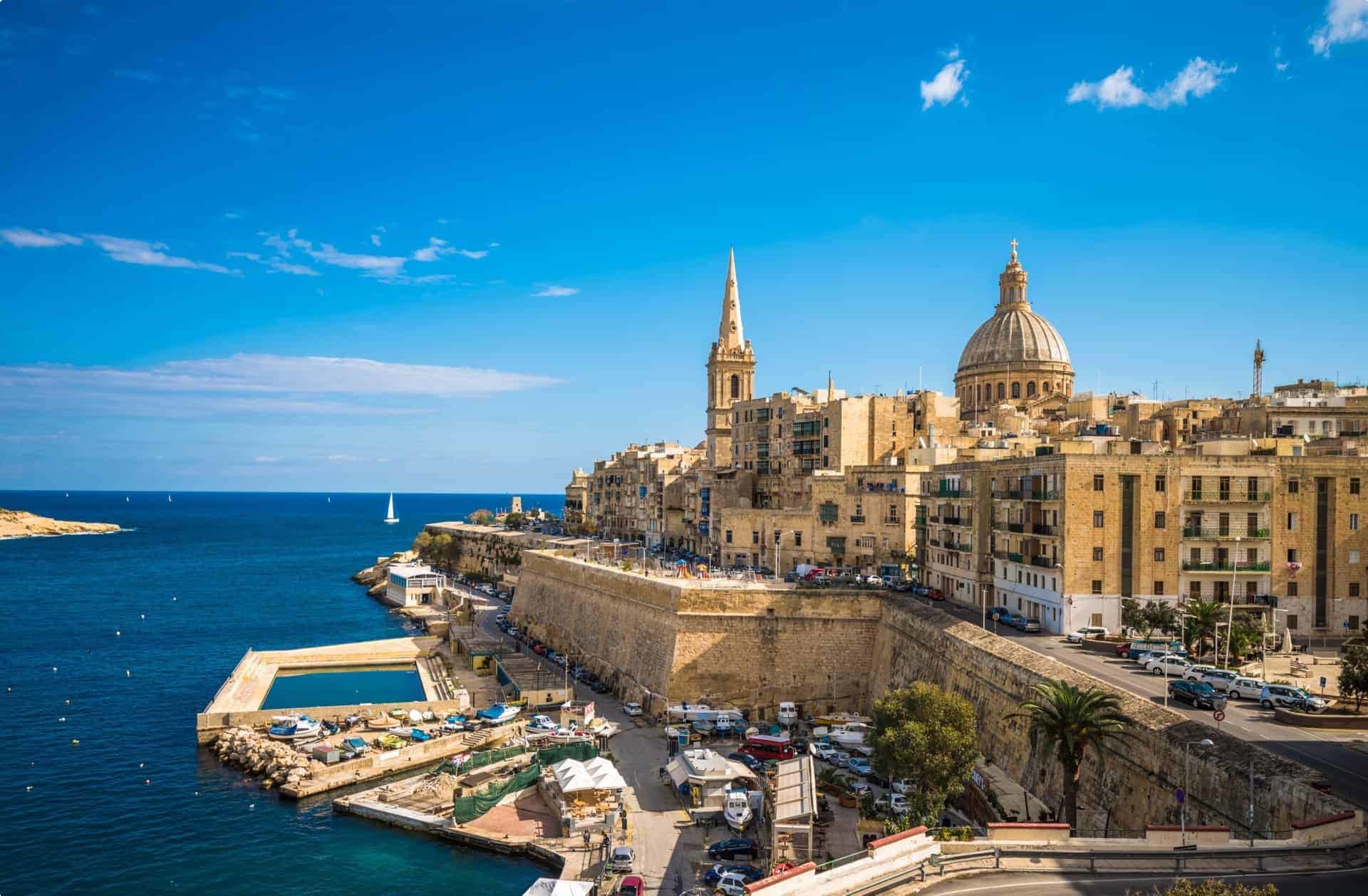
Valletta is one of the first planned cities in all of Europe. It was named after Grand Master Jean Parisot de Valette (1495-1568) hero of the 1565 siege. Despite measuring only 900 metres by 630 metres, Valletta boasts over 25 churches, a testament to the strength of the Catholic faith. The city was designed by Pope Pius V’s military engineer, Francesco Laparelli, who drew up the plans for the city and its defences. When visiting Valletta, don’t miss:
- John’s Co-Cathedral and its magnificent Baroque interior. Caravaggio, the Italian master painter, painted several works for this spiritual headquarters of the Knights.
- The Grandmaster’s Palace, home to one of the largest armouries in the world, and the Hall of the Supreme Council of the Knights of St John.
- Fort St Elmo, rebuilt after its destruction by the forces of Suleiman I during the Great Siege of Malta in 1565.
- The Auberges, the inns of residence of the Knights of St John.
- The ‘Malta Experience’, an audio-visual show chronicling Malta’s rich history, set in a purpose built panoramic auditorium.
- Renzo Piano’s Architectural masterpiece; City Gate, Opera House and Parliament building.
Highlights of the island of Malta
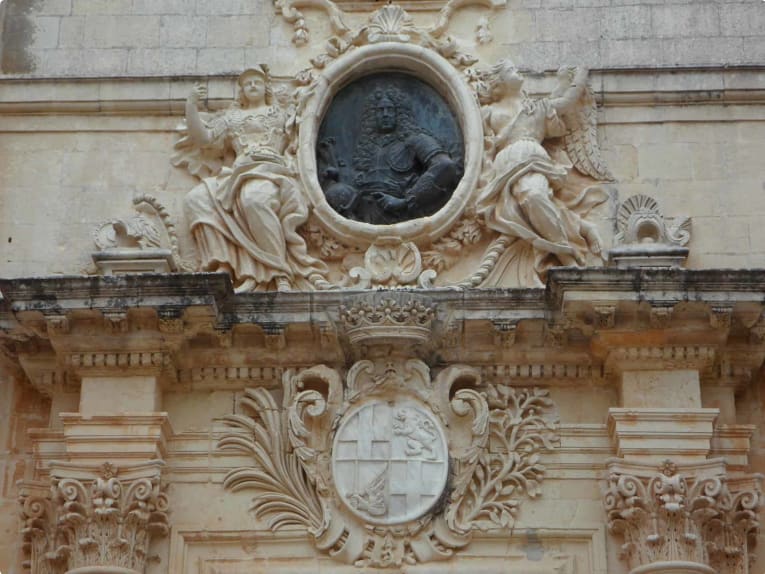
- Mdina, the ‘silent city’, is Malta’s ancient capital, and arguably one of the best examples of an inhabited medieval city in Europe. It was the home of Malta’s nobility in medieval times, when it was called the Città Notabile. In 1090, Count Roger the Norman decreed that a cathedral should be built to re-establish Christian worship and teaching. This was duly erected above a ruined sanctuary where the house of Publius, the Roman governor of Malta, once lived. Publius is famous for greeting St Paul in 60 CE following the apostle’s shipwrecking on the island. The cathedral was destroyed by the great earthquake of 1693, but soon replaced in the Roman Baroque style, with a magnificent dome dominating the surrounding landscape.

- Rabat is an extension of Mdina, separated by an Arab-constructed wall and ditch. Now a commercial centre, it also contains Malta’s oldest church, early Christian catacombs and the Museum of Roman Antiquities.

- The little town of Mosta in the centre of the island is famous for the Parish Church of Santa Maria (better known as the Mosta Dome). The Dome was constructed around an older church which remained in use during construction. The parishioners provided most of the funds and much of the labour. Mosta is also home to the Victoria Lines, 12kms of fortifications built by the British in the late 19th century.
- The Hal Saflieni Hypogeum, a subterranean necropolis, is thought to date from around 3600 to 3600 BC. The discovery of this amazing site was made in 1902 when construction workers, who were excavating to build the foundations of a building, stumbled upon what appeared to be an underground sanctuary. When archaeologists began uncovering the site, they found a massive underground structure consisting of three levels carved into stone.
- The Tarxien temples, built between 3600 and 2500 BC. Malta’s stone age farmers built over 50 massive temples, 23 of which have been investigated by archaeologists and are now listed by UNESCO as a World Heritage Site. Their interiors have intricately carved decorations of animals, snakes, fish, spirals and dots. One of Tarxien’s temples houses an enormous statue of a broad-hipped female, probably representing fertility.
- The Ghar Dalam cave, the ‘cave of darkness’, is an archaeological site some 500,000 years old. This is the site of the oldest known human habitation on Malta, yielding remains of animals suggesting that Malta was once joined to Italy, but not northern Africa.
The island of Gozo
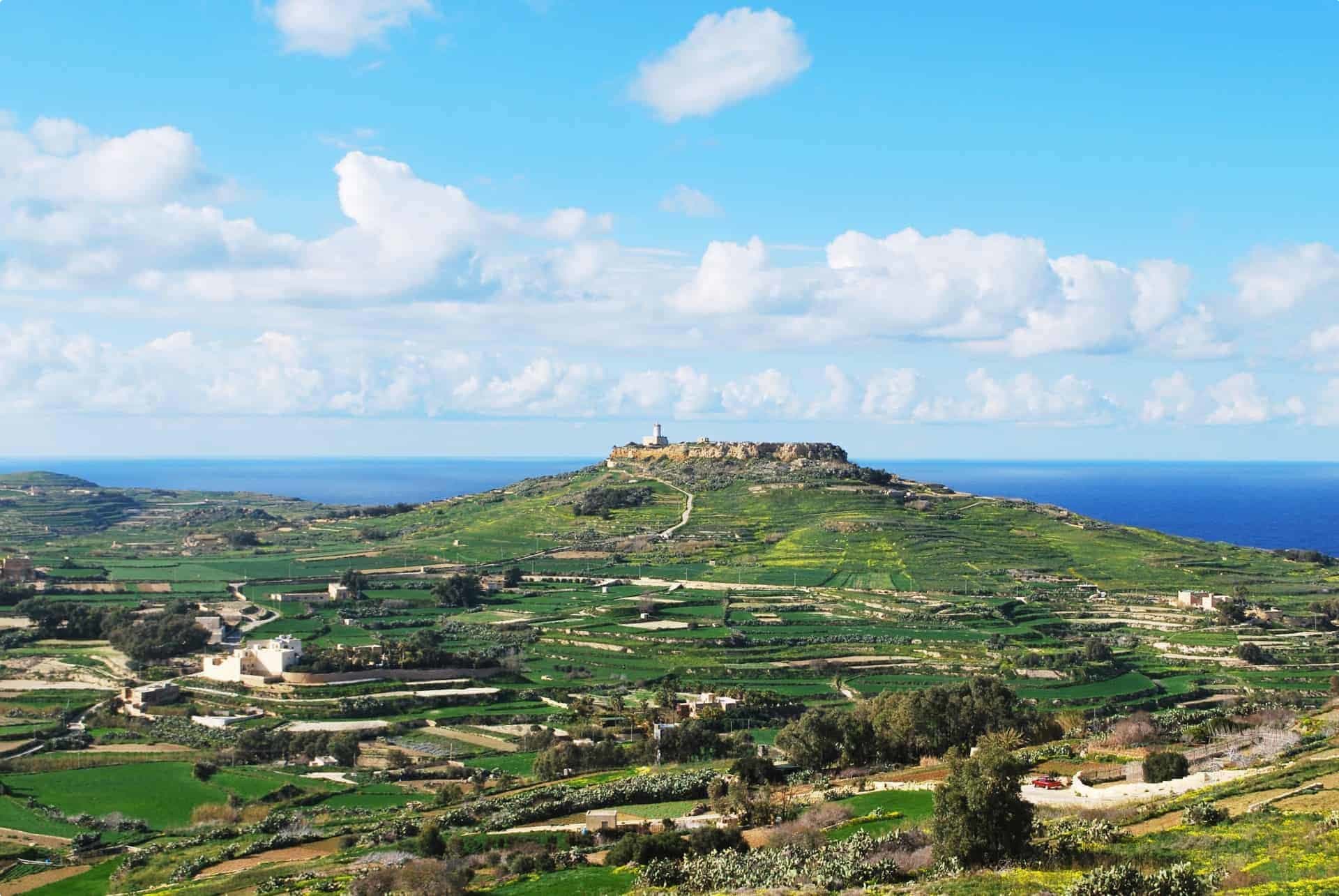
Gozo’s tightly-packed hilltop villages and little fortified farmhouses are the legacy of slave-snatching raids by Barbary corsairs. It’s still an island of farmers and fishermen, with a population of only 25,000. Gozo’s main town, Victoria, is a maze of little streets, old stone balconies and religious shrines.
Highlights of Gozo
- The massive walls and bastions of the citadel, Il-Kastell. The citadel was designed soon after the Great Siege, and built with the aid of a donation from Philip II of Spain. It contains the Palace of the Governors of Gozo, the cathedral, law courts, three medieval houses containing the Folklore Museum, and a nobleman’s palace holding the Archaeological Museum. The citadel’s ramparts provide a panoramic view of the whole island, across the water to Malta, and on a clear day, even Sicily.
- High on a hill east of Victoria is the stone age temple complex of Ggantija (dje-gant-ee-ya), the oldest of all the Maltese temples, dating from 3600 to 3200 BCE. These are the oldest free-standing stone edifices left on earth, pre-dating the pyramids of Egypt and the Mycenaean temples on Crete.
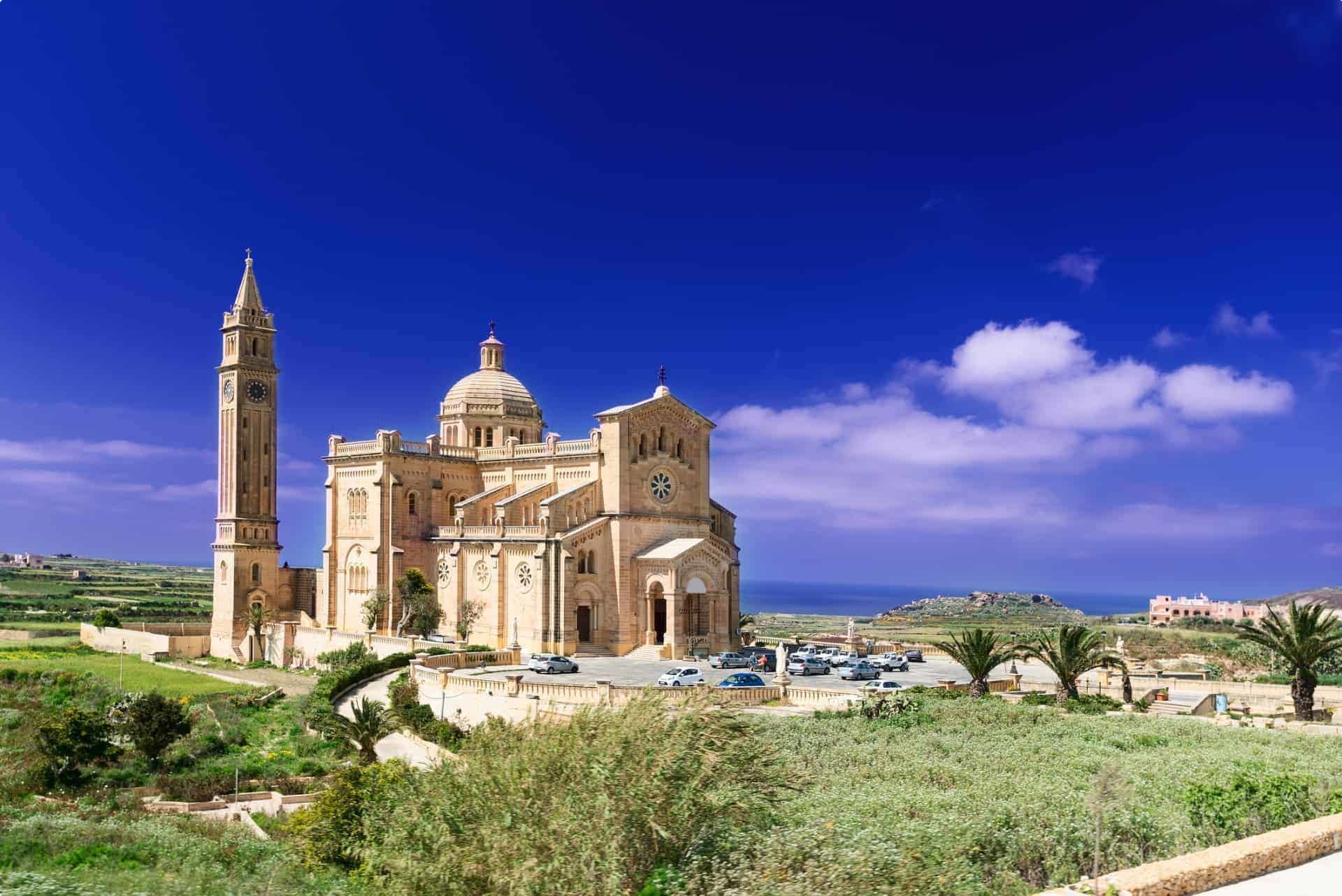
- The origin of the Ta’ Pinu Basilica is unknown, but the first records of the chapel date back to 1534. In 1575, the church was closed by a delegate of Pope Gregory XII because it was in such a bad state. He also gave orders for the shrine to be demolished but, according to legend, the first blow with the pick broke the worker’s arm, which was understood as a divine message. Accordingly, the chapel was saved.
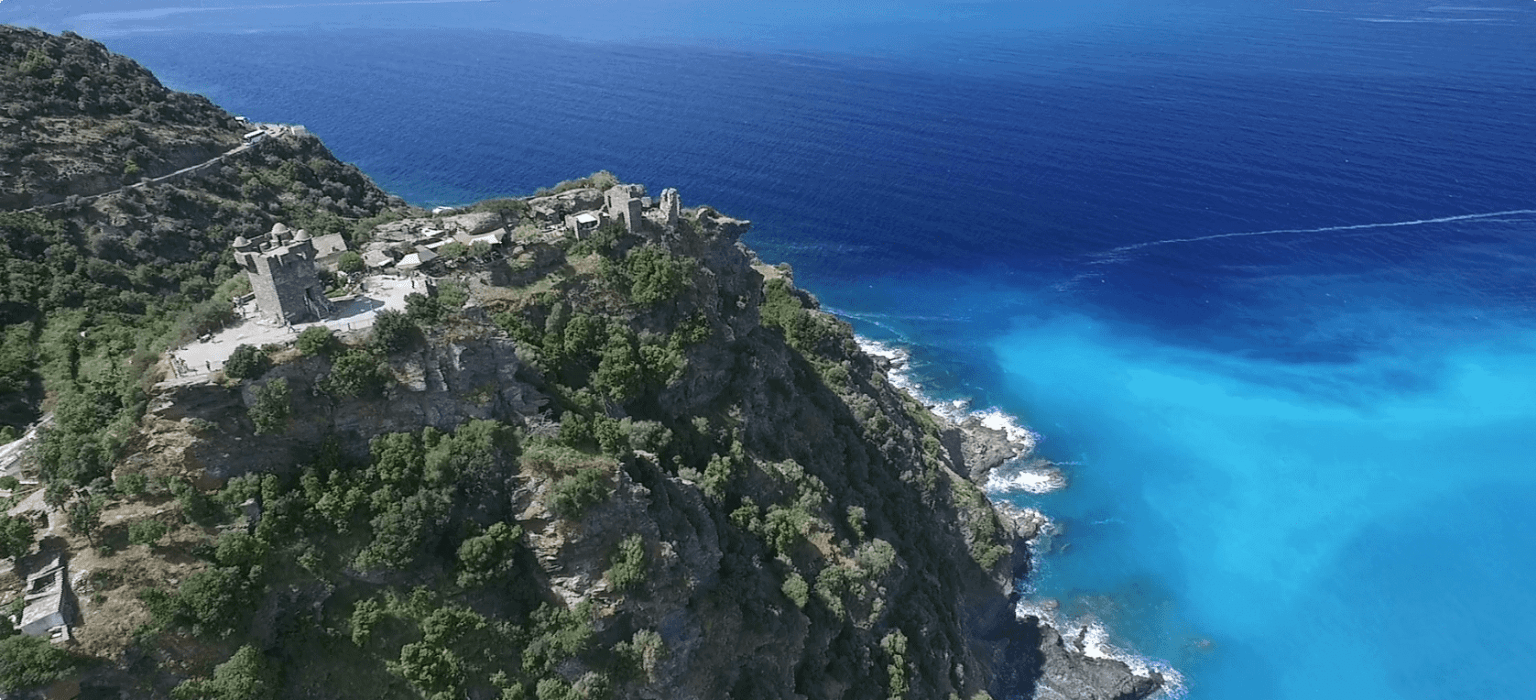
Sicily is the largest Mediterranean Island.

The island of Sicily is the largest in the Mediterranean, and in medieval times it was the stepping stone between Europe and Africa. It has been invaded and fought over by Phoenicians and Greeks, Carthaginians and Romans, Goths and Byzantines, Arabs and Normans, Germans, Spaniards and the French. The island’s geography, topography and climate remain fixed, but the island’s art, architecture, cuisine, religion, education and government were influenced and altered by each conquest. Today, sardine and tuna fishing, along with tourism, are important local industries.
Palermo, the capital

Palermo is located towards the north-western tip of the island, flanked by the Tyrrhenian Sea on one side and Monte Pellegrino on the other. This forms a natural amphitheatre called the Conca d’Oro (the Golden Seashell) in which the city nestles. Palermo’s beautiful setting, its monuments and architecture, along with its folklore and the local cuisine, make it one of the most exciting and exotic cities to visit.
Highlights of Palermo

- The most magnificent monument in Palermo is the Norman Palace, Palazzo Normanni, and its Cappella Palatina, or Chapel Royal. The first Norman king, Roger II, blended Byzantine, Islamic and Romanesque styles of design and craftsmanship. It is adorned with mosaics as well as marble inlaid with gold, stone and glass. The walls and ceiling glow with these mosaics, vividly depicting scenes from the Bible.
- On a hill behind the city is Monreale, the ‘royal mount’, where William II founded a cloistered monastery celebrated for its mosaics and adorned capitals.
- The Teatro Massimo, Palermo’s magnificent Opera House.
- Quatro Canti, the magnificent Baroque piazza.
- La Martorana, renowned for its spectacular interior.
Other places of interest to see in Sicily

- Segesta is an archaeological site about 70 kilometres southwest of Palermo. Its ancient Greek temple is one of the best preserved Doric temples in the world, despite not being finished. The hill-top site of the ancient city was inhabited into the Middle Ages and contains the ruins of a Norman castle, a small church, a mosque, and a classical theatre.
- Caltagirone was originally Arab, then Norman, then resettled between 1038 and 1040 by a colony of Ligurians. Today it’s one of Italy’s major ceramic production centres, and the whole city seems to be dressed in polychrome majolica. In Caltagirone, don’t miss the approach to the city’s Regional Museum of Ceramics. It comprises a network of ramps, alternating with steps and benches, all of which are adorned with panels and reliefs in colourfully-decorated ceramic tiles.
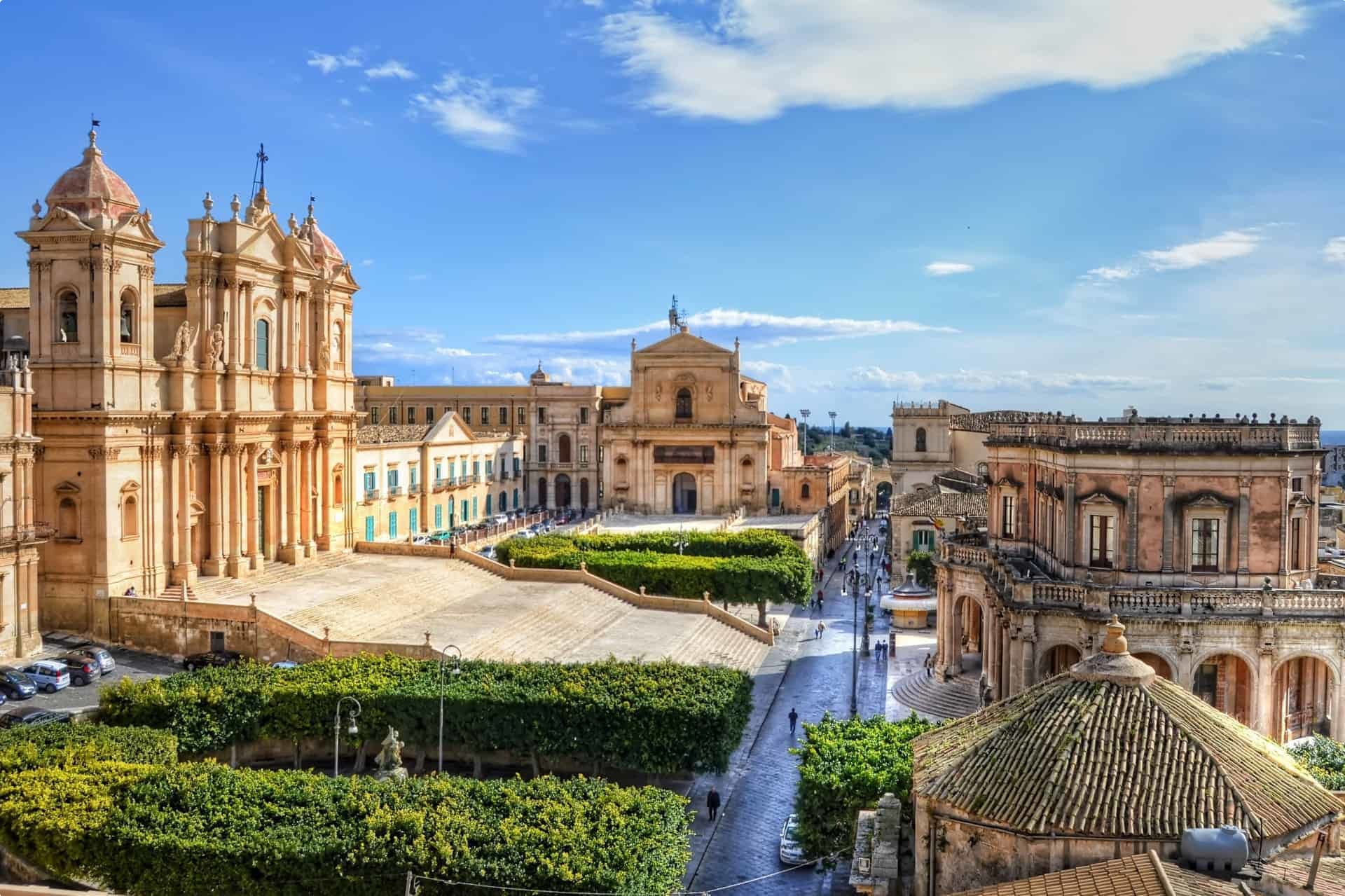
- A devastating earthquake in 1693 flattened the town of Noto. Subsequently, its nobles rebuilt it in the 18th century into the finest Baroque town in Sicily. Now a UNESCO World Heritage Site, the town is most impressive in the early evening, when its golden hued sandstone buildings seem to glow with a soft inner light, and at night when illuminations accentuate the beauty of its intricately carved facades. Don’t miss the San Franceso Church, the Monastery of Santa Chiara, the Duomo and the Palazzio Ducezio.
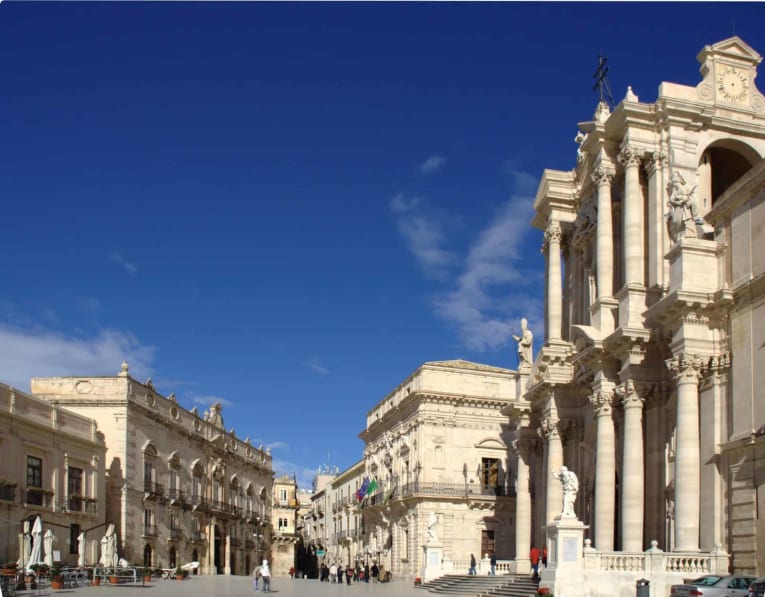
- From the 5th to the 3rd centuries BCE, Syracuse was the most powerful and important of all the Greek city-states and, according to Cicero, the most beautiful. In its heyday, it was bigger than Corinth or Athens, and was the largest city in the ancient world. Building the city’s cathedral began in 1728, when the remains of the 5th century BCE temple of Athena were left standing and incorporated into the new Baroque structure. There are many reminders of the city’s Greek past — the ancient quarter of Neapolis, the Teatro Greco, Temple of Apollo, the Ear of Dionysius, and the Arethusa Fountain.

- Splendidly situated, Taormina is Sicily’s window on the modern world. It is luxurious and worldly with snow-capped Mt Etna on one side and sandy beaches far below, but it also offers glimpses of antiquity. Its famous Greek theatre was begun in the 3rd century BCE and rebuilt by the Romans. Among other classical remains are the ruins of the odeum, intended for musical performances, and the naumachia, an artificial lake for mock battles.
- Piazza Armerina is a half-medieval, half-baroque provincial town. It’s important for the early fourth century Roman mosaics in the UNESCO listed Villa Romana del Casale. The floors of what remains of the villa are decorated with some of the finest surviving mosaics from Roman antiquity.
- Trapani once sat at the heart of a seaborne trading network stretching from Venice to Carthage. It was here that Peter of Aragon landed in 1282, beginning the Spanish occupation of Sicily. Its historic centre features 18th century Spanish Baroque architecture. Trapani is famous for its four day Easter celebration, when its 20 guilds parade life sized statues through the old quarter from the Chiesa del Purgatorio to a specially erected chapel in Piazza Lucatelli.
- Mozia is an ancient town founded by the Phoenicians on a small island off the coast of Sicily. To the Arabs it was Mars el’Allah, literally “Port of Allah”, and Marsala is now the name of the region. The island was bought by the Whitaker family in the late 1800s and they subsequently made a fortune from the wine they made and named after the region — marsala. Joseph Whitaker also began archaeological digs on the island in 1913 and founded a museum for its finds.
- South-west of Palermo located on the southern coast and overlooking the Ionian Sea is another ruined Greco-Roman city, Selinunte. It prospered in the high classical period of the 5th century BCE, when most of its temples were built, and became one of the great city-states of Magna Graecia. One of its temples is one of the largest Greek temples ever built, rivalling the Parthenon.
- Take the funicular up to the spectacularly sited town of Erice. From its heights on a clear day, it is possible to see the summit of Mt Etna at the other end of the island.

Sardinia has been occupied for some 150,000 years.

There is evidence of human settlement in Sardinia from the Old Stone Age — at least 150,000 years ago. A significant population of early agricultural villages evolved in the Neolithic era, around 8000 BCE. Part of its prosperity was due to obsidian, a hard black glassy volcanic rock excellent for making sharp tools and arrow-heads, which was exported throughout the Mediterranean. A religion based on the worship of a mother or fertility goddess was practised, and small images are common finds in Sardinia.
Sardinia flourished in the Bronze Age as copper was found and mined, worked and exported. The population became diverse, including people from the western and eastern Mediterranean and northern Africa. The most remarkable innovation in this era was construction of the first nuraghe, a defensive structure developed in the late 2nd millenium BCE. Nuraghe are circular defensive towers in the form of truncated cones, built of dressed stone, with corbel-vaulted internal chambers. Over 7,000 still exist in Sardinia today.
Tourism is now generating new opportunities, but outside the capital and the many beach resorts, Sardinia retains the air of a pre-industrial relic of an older Europe.
Cagliari, the capital

Sardinia’s capital, Cagliari, stands on Sardinia’s best harbour, with an easily defensible hill above it and a fertile plain stretching behind. The Stampace quarter in the lower town is picturesque and best known for the church dedicated to Cagliari’s patron, Sant’ Efisio. The upper town or Castello is fortified and contains a Pisan tower, a pink Baroque cathedral, and the 18th century university building. Next to the cathedral stands the former viceroy’s palace, while on the highest point stands the second Pisan tower, Torre di San Pancrazio, dating from around 1300. Nearby are the National Archaeological Museum and the Pinacoteca or art gallery. The east end of Cagliari, laid out in the 19th century, is the modern city centre but also contains some of Sardinia’s oldest churches.
Places of interest in Sardinia
- About 60 kilometres north of Cagliari is one of the largest complexes of nuraghe in Sardinia, Su Nuraxi du Barumini. It was buried until 1949 when a Sard archaeologist decided to investigate an ancient well there. Su Nuraxi was later surrounded by four towers and a massive curtain wall, and has a network of narrow passages and stairways. The whole tower is tightly surrounded by a cluster of round stone huts, forming a large village — possibly the Sards’ capital or chief trading centre.
- Nora is Sardinia’s best example of a Roman provincial city, with paved streets over a sewage system, a forum, temples, a theatre, baths, and a medical centre dedicated to the Greek god of healing, Aesclepios.
- The nearby modern village of Pula has an archaeological museum containing the findings of 19th century excavations, including Carthaginian tombstones and Greek vases, as well as Roman and Byzantine items.
- Wild and rocky Capo Spartivento is capped with a lighthouse. Beyond it the south coast is ruggedly beautiful, a succession of limestone cliffs and sandy beaches.

- The Archipelago of La Maddalena is seven small islands and about 40 rocky islets off the northern coast. They were recently declared a national park both for their natural beauty and for the rare flora and fauna which are found there. A small archaeological museum displays a Roman shipwreck of 120 BCE, including its cargo of wine — or at least the amphorae (large ceramic jars). The best way to visit the archipelago is by private boat.
- Set in a spectacular setting at the foot of Monte Ortobene, the village of Nuoro was made the seat of a bishopric in the 18th century but was still tiny when it became a provincial capital in 1927. Its old quarter is a charming maze of lanes and contains the Museum of Sardinian Life and Popular Traditions featuring clothing and jewellery, furniture and tapestries, musical instruments, carnival masks and figures used in traditional festivals.
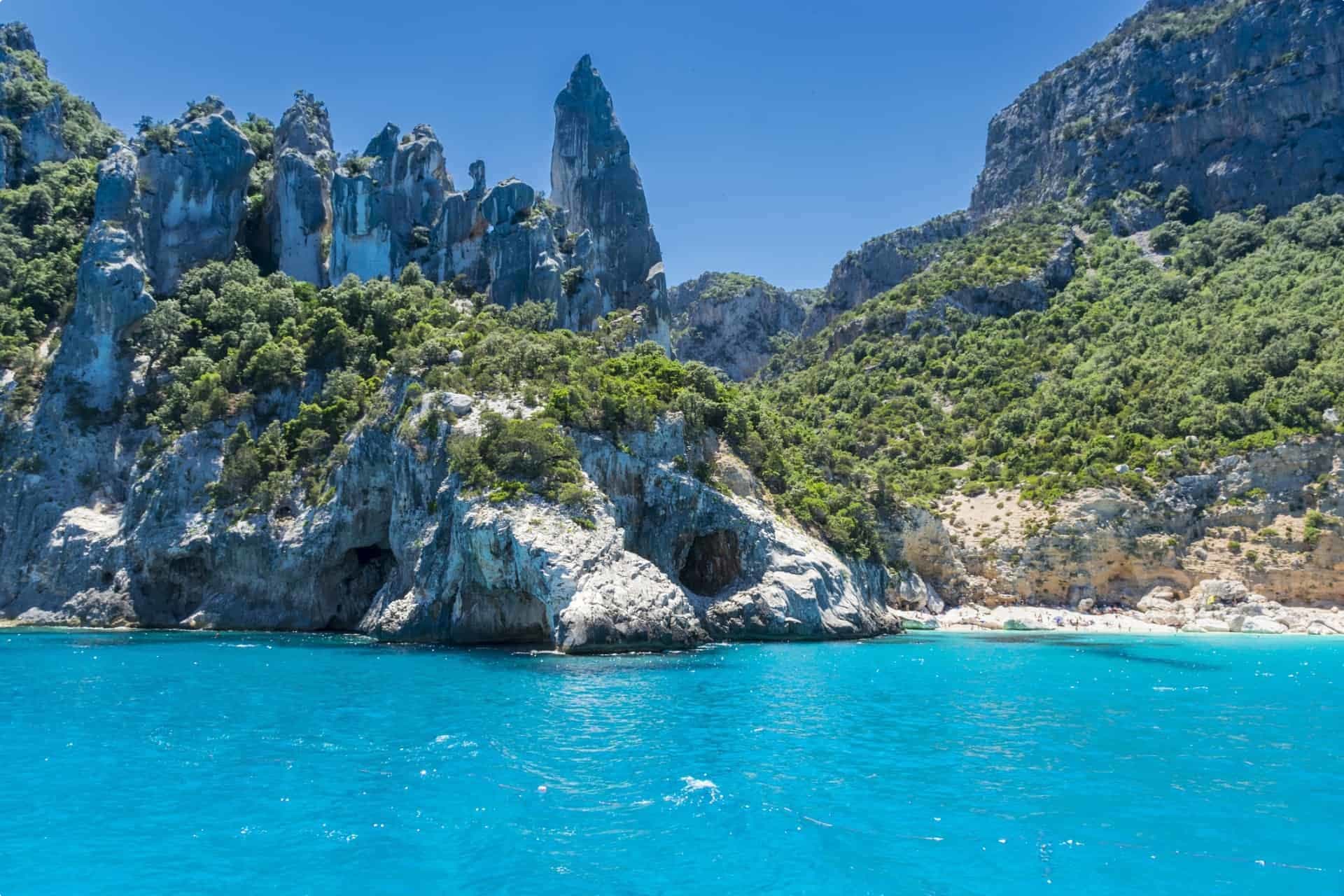
- The highest peaks of the Barbagia (a mountain area in inner Sardinia) are known as the Gennargentu (‘silver gate’ from the Latin Janua argenti) Mountains, made of granite and shiny schist. Made a National Park against bitter opposition from the villagers, the forest below the silvery peaks includes holm oaks, maple, and dwarf juniper. It is the habitat of golden and Bonelli eagles, royal kites, European vultures, wild cats, boar and mouflon (mountain sheep).
- With a population of 120,000, Sassari is Sardinia’s second largest city and has the air of an independent medieval city. In the late 19th century the city fathers demolished the old Aragonese fortress which had become a symbol of oppression. The town still contains some Catalan gothic palazzi and Baroque churches; the oldest, Santa Maria di Betlem, founded in 1106, is older than the town itself. The cathedral, San Nicola, was rebuilt in the 15th century in the Catalan gothic style, and in the 18th century an exceptionally beautiful Baroque façade was added.

- Alghero, on the west coast, overlooks a great bay with some of Sardinia’s finest beaches, making it a leading tourist centre. It is both beautiful and distinctive — and more Spanish than Sardinian. The town centre contains a 14th century Franciscan church, Catalan gothic palazzi and a 16th century cathedral, but perhaps its finest feature is the surviving portions of the medieval walls, especially the sea walls with their seven towers.
Corsica, a jewel in the Mediterranean sea.

Corsica lies about 150 kilometres south east of the French mainland, 70 kilometres from mainland Italy and 15 kilometres north of Sardinia. It has a high, craggy coastline, and a mountainous interior covered with forest and scrub (called maquis), cut by fertile valleys. Crops flourish in the rich valley soils; grapes, other fruit, vegetables, olives and tobacco are grown, while its forests include cork-oak, chestnut and pine. Sheep graze in the mountains — wool and cheese are important exports — and fishing produces sardines; granite and marble are quarried. The rugged scenery, beaches and colourful villages have made Corsica highly attractive to tourists.
Ajaccio, the capital
Corsica’s largest town has palm trees, cafés and yachts, and looks like a typical French Mediterranean resort, but it’s overlooked by a citadel founded by the Bank of St George in 1492. Since World War II, tourism has become Ajaccio’s most important economic activity, assisted by the fact that it is the birthplace of the most famous Corsican ever — Napoleon.

He was born in a grand mansion now called the Maison Bonaparte. After the family vacated it hurriedly in 1793 it suffered many vicissitudes until it was acquired by the French government in 1923 and made into a museum of the Bonaparte family.
Highlights of Ajaccio
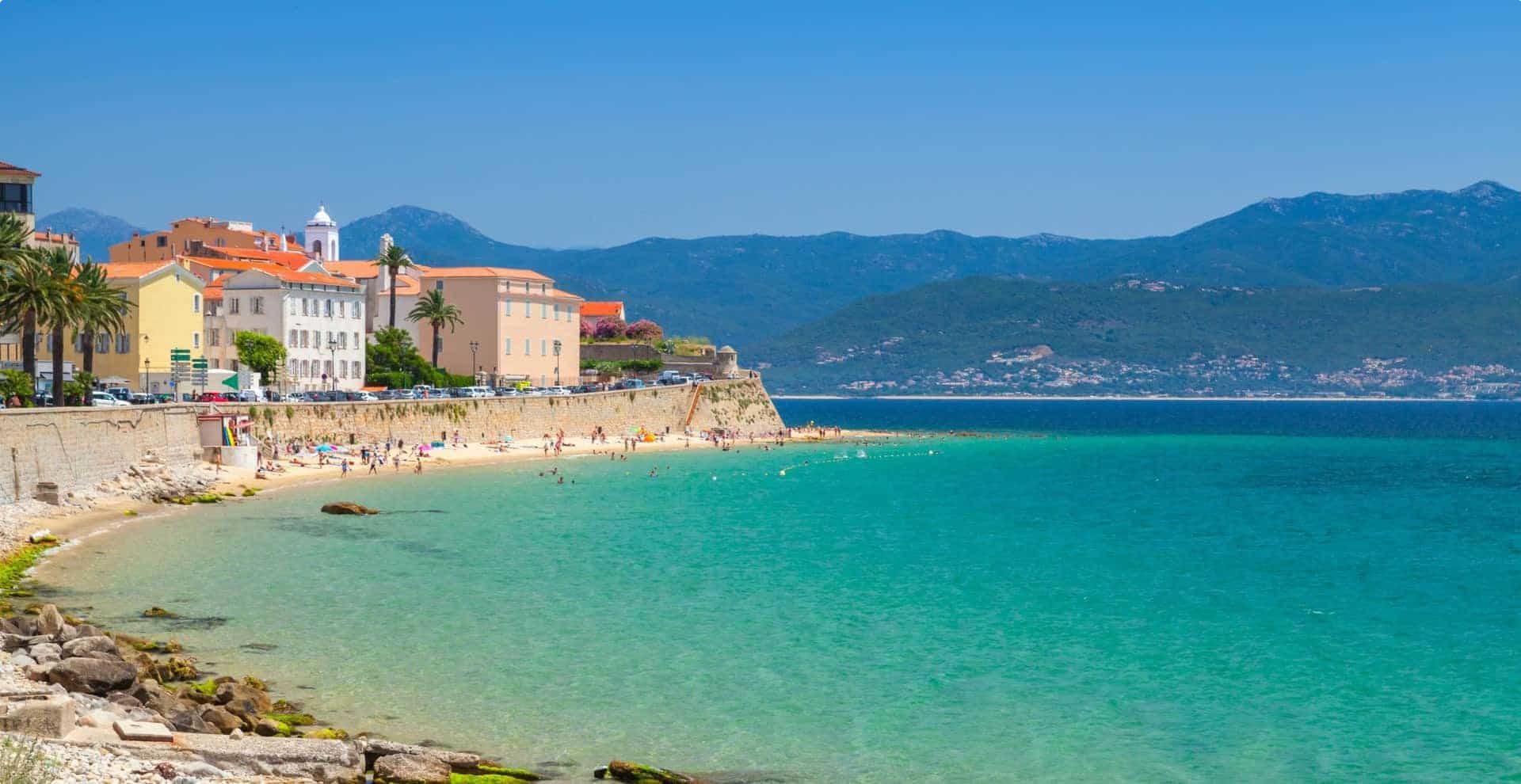
- The Palais Fesch was the home of Napoleon’s step-uncle, Cardinal Joseph Fesch, who became a noted art collector, picking up bargains in the wake of the French army’s looting of Italy, Holland and Germany. The Cardinal bequeathed much of his collection — which includes works by Titian, Botticelli and Poussin — to Ajaccio, housed in what is now the Palais Fesch Musee des Beaux Arts.
- Built on a narrow peninsula at Corsica’s southernmost point, Bonifacio’s upper town rises superbly above sheer cliffs, surrounded by immense fortifications. The sole entrance to the upper town from the port is protected by eight gates and a drawbridge.
- Founded in the 5th century BCE by Greeks from Syracuse, Porto-Vecchio disappeared in the Dark Ages due to pirates and malaria, but was re-founded by the Bank of St George in 1540. It’s sited on a magnificent harbour in the southeast part of the island and is now a crowded port and holiday resort, especially popular with Italians. The old town high above the port is still enclosed in its Genoese walls.
- Sartene was formed in the 10th century when villagers congregated in a safer place to escape from Arab raids. Often a refuge for bandits, Sartene was also notorious for vendettas until the mid-19th century. In the main square is the 16th century Hotel de Ville, formerly the palace of the Genoese governors. Behind it lies the old Santa Anna quarter, a web of alleys and steep steps, with a jumble of dark stone houses and noblemen’s mansions evoking medieval Corsica.
- Propriano, on the Golfe de Valinco, was used by Greeks, Carthaginians and Romans. The small town was subject to Pisa and later the Genoese, but its vulnerability to pirate raids led Propriano to decline into a fishing village. It revived in the 19th century as a ferry and commercial port, and more recently as a tourist destination, its attractions being beautiful beaches, good sailing and diving sites.
- Filitosa is one of the most important prehistoric sites in Europe. It was occupied by Neolithic farmers from 6000 BCE, but it was invaders around 3500-3000 BCE who created the first menhirs. When the torreens (towerbuilders) conquered Filitosa in about 1300 BCE, they destroyed most of the menhirs by incorporating them into the walls around the three towers they built here. The archaeological site, discovered only in 1948, consists of a number of groups of menhirs and other structures.
- The coast of the Golfe de Porto is one of Corsica’s most famous landscapes, and a UNESCO World Heritage listed nature reserve. It occupies the Scandola peninsula, an impressive, porphyritic rock mass. The vegetation is an outstanding example of scrubland. Seagulls, cormorants and sea eagles can be found there. The clear waters, with their islets and inaccessible caves, host a rich marine life.

- High on the island’s central spine, just north of its geographic centre, Corte has been the capital of Corsica on three occasions. Corte was centre-stage in the War of Independence, Corsica’s constitution was proclaimed here, and in 1765 Pasquale Paoli founded the island’s only university. In the heart of the old town is Place Paoli, with a 19th century statue of the hero. From here historic Rue Scholastica leads to Place Gaffori, with another statue, and Paoli’s house which still bears bullet holes from the siege of 1750. The 16th century Palazzu Nazionale is nearby. One tower from Vincentello d’Istria’s citadel survives. The rest was adapted as a fortress barracks, housing the French Foreign Legion 1962-1983, and is now the Museum of Corsica.
- Calvi was originally a Roman port. The Bank of St George enlarged the citadel and in the 1550s it twice survived sieges by the French who were allied with the Turks. In the 1960s, Calvi was discovered by some of the European elite and it became an alternative to the Riviera, possessing not only a spectacular beach but also a night-club belonging to an exiled Russian prince. With its yacht marina on the bay and snow-capped mountains in the background, it now flourishes as a holiday resort. The citadel’s ramparts and three mighty bastions loom over the harbour; inside is the Genoese governor’s palace, now an army barracks; and the cathedral of St John the Baptist, rebuilt in 1570 in the Renaissance style.
- Bastia was the capital of the island under the Genoese. It is less concerned with tourism than elsewhere, and still retains a very Italian flavour. The Vieux Port (old port) is perhaps the most atmospheric part of town, now a backwater but lively at night. The Citadelle, or Terra Nova, has been beautifully restored and contains the Palais des Gouverneurs, part of which contains the Corsican Museum of Ethnography and History, including the ancient Genoese dungeons of the palace.
- A picturesque road follows the coast around the narrow mountainous peninsula of Cap Corse, pointing like a finger towards Italy. It boasts spectacular cliff scenery, weathered watchtowers guarding its coves and fishing villages, a few vineyards and maquis covering the hillsides.
- Saint-Florent was originally a Roman and Byzantine town, and is named for Florent, a bishop exiled here by the Vandals. He was a holy and revered pastor, and a local cult developed around his grave, which, despite the theft of his relics to Treviso a few centuries later, continued. Its outstanding monument is the Pisan Romanesque cathedral of Santa Maria Assunta, isolated in a field just outside the little town. Built around 1140 of honey-coloured limestone, the basilica has wonderfully carved capitals and an elegant harmonious interior. The citadel, built in 1439, is the only large round tower in Corsica. It was reduced to ruins by British bombardment in 1794, but has recently been restored.
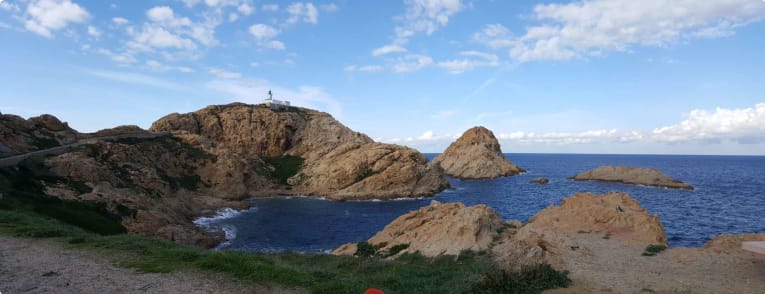
- The little harbour of L’Ile Rousse, flanked by red porphyry rocks, has three sandy beaches and the mildest winters in Corsica, ensuring it has flourished as a holiday resort. With its plane trees and palms along the promenade, covered market and restaurants, and games of boules in the square, it resembles the French Riviera. Just behind the little town are three charming old villages in the olive groves, with Romanesque and Baroque churches and ruined castles.
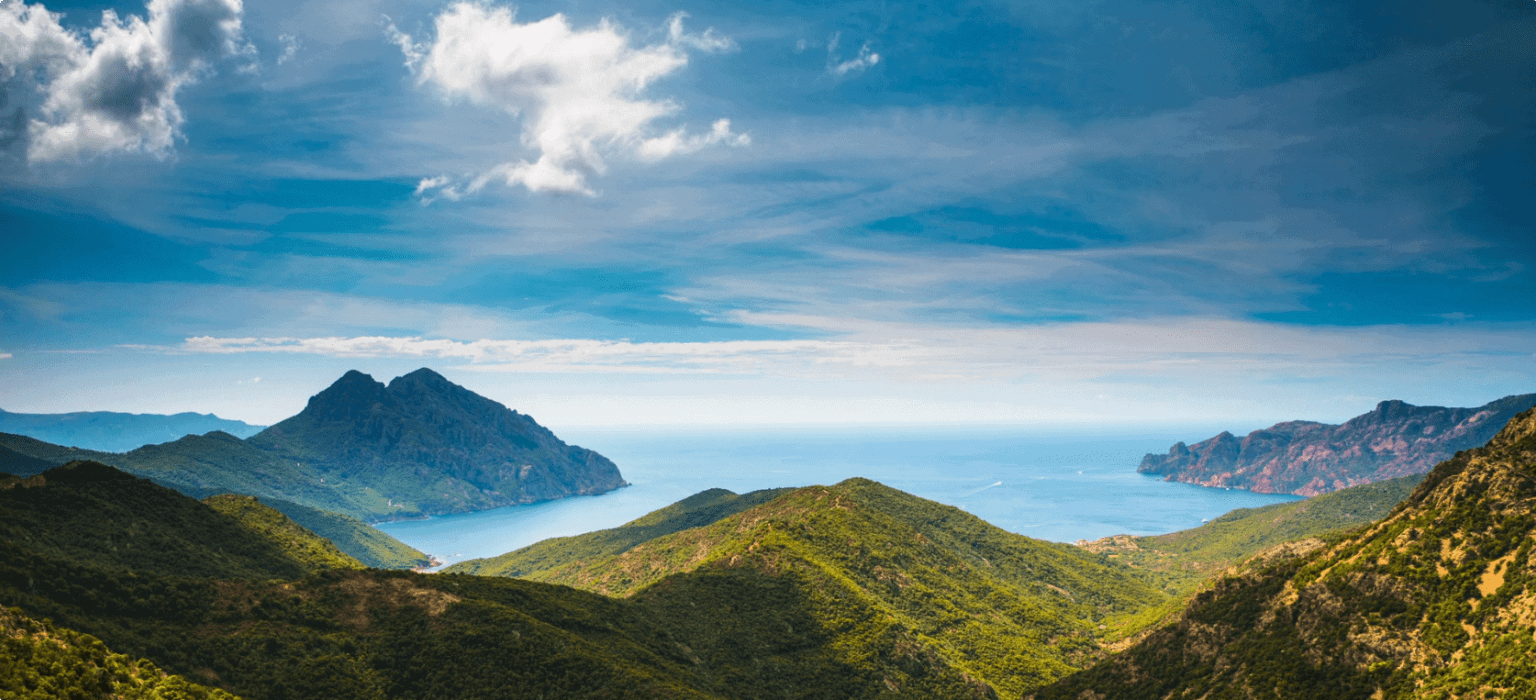
This short introduction to the islands’ intertwined histories and an overview of places to visit show the richness of the experience and heritage on offer on the shore of these western Mediterranean islands. Odyssey Traveller’s organised tour around the islands especially designed for the active senior traveller lets you spend five (5) days in Malta, a week each in Sicily and Sardinia, and six (6) days in Corsica. This is sure to be an epic and memorable experience for those interested in discovering more about the Mediterranean. There is also a short tour focusing on just Malta and Sicily. Click through to know more about the itineraries and to reserve your spot. We hope to see you there!
Related Tours
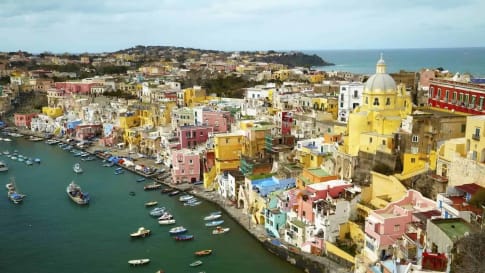
22 days
Jan, Apr, SepAncient History of Southern Italy & Sicily group tours
Visiting Italy
Our program for senior travellers, as well as featuring the rugged countryside of Southern Italy, also encompasses learning about the many civilisations that have shaped this land. We learn about the influence of the early Phoenicians, Greeks, Romans, Byzantines, Saracens, and Aragonese.
From A$16,995 AUD
View Tour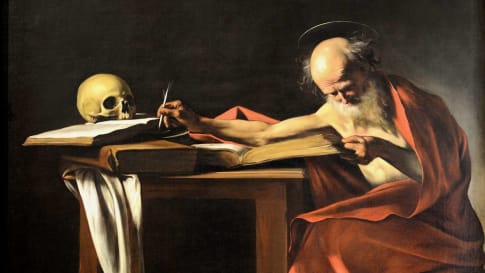
20 days
May, OctCaravaggio’s Journey | Small Group Tour in Italy
Visiting Italy, Malta
On this small group tour of Italy and Malta for mature and senior couples and solo travellers we trace the life of Caravaggio, exploring the artistic works he left behind and the tumultuous life he led. We follow him from his birthplace in Milan to Rome, Malta, Sicily and Naples. In each place he lived Caravaggio left behind a rich legacy of art for us to admire.
From A$15,125 AUD
View Tour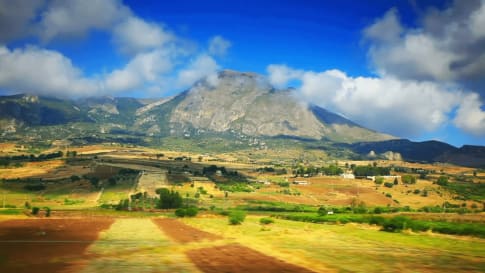
12 days
Apr, Oct, SepMalta & Sicily - Mediterranean Islands small group tour
Visiting Italy, Malta
For centuries Malta & Sicily, held the key to the Mediterranean. Unlike other European tour companies, Odyssey provides a tour leader and local guides to share detailed itineraries about the destinations on these small group journeys. For mature couples and solo travellers. A reasonable single supplement is charged.
From A$10,150 AUD
View Tour
25 days
Apr, Sep, OctMediterranean Islands Small Group Tour | Malta, Sicily, Sardinia and Corsica
Visiting Corsica, Italy
For centuries Malta, Sicily, Sardinia and Corsica held the key to the Mediterranean. Unlike other European tour companies, Odyssey provides a tour leader and local guides to share detailed itineraries about the destinations on these small group journeys. This escorted tour of western Mediterranean explores the geography, history, culture and peoples of these 4 islands. Small group tour for mature couples and solo travellers. A reasonable single supplement is charged.
From A$19,750 AUD
View Tour
20 days
Sep, AprCrete Small Group Tour: The Minoans
Visiting Greece
Crete rich in UNESCO World heritage sites this small group escorted tour provides a travel experience for guests with experienced local guides to remember. For senior couples or single travellers who seek to travel with other like minded people to destinations rich in ancient history then this in one of many small group journeys to be enjoyed.
From A$13,500 AUD
View Tour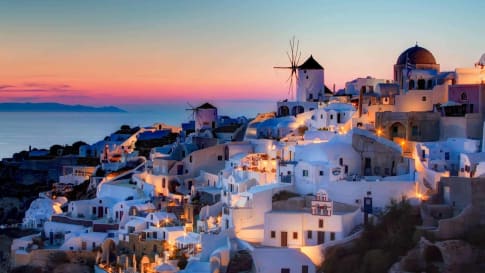
21 days
Apr, OctSantorini, Crete and Cyprus Small Group Tour | Eastern Mediterranean Islands Tour
Visiting Cyprus, Greece
A fascinating small group tour, with an amazing mix of culture and history – the islands of Greece, the cradle of Western civilisation, where traces of a centuries-old history exists. Visit Santorini, a remnant of a volcanic era; Crete, the home of the Minoan civilisation with important archaeological finds at Knossos and Phaistos. Rhodes, inhabited since the Stone Age; and venture further to the island of Cyprus, where east meets west.
From A$17,545 AUD
View Tour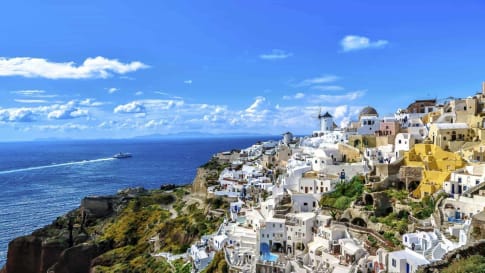
10 days
Apr, Oct, MarSantorini - Crete: Eastern-Mediterranean Islands Short tour
Visiting Greece
Join our small group short tour of the Eastern Mediterranean. Spend 10 days in Greece for a glimpse of the land of great philosophers, myths, and legends. We will learn about the culture and heritage of modern Greece while travelling from Athens to Santorini and over to Crete.
From A$9,375 AUD
View Tour

